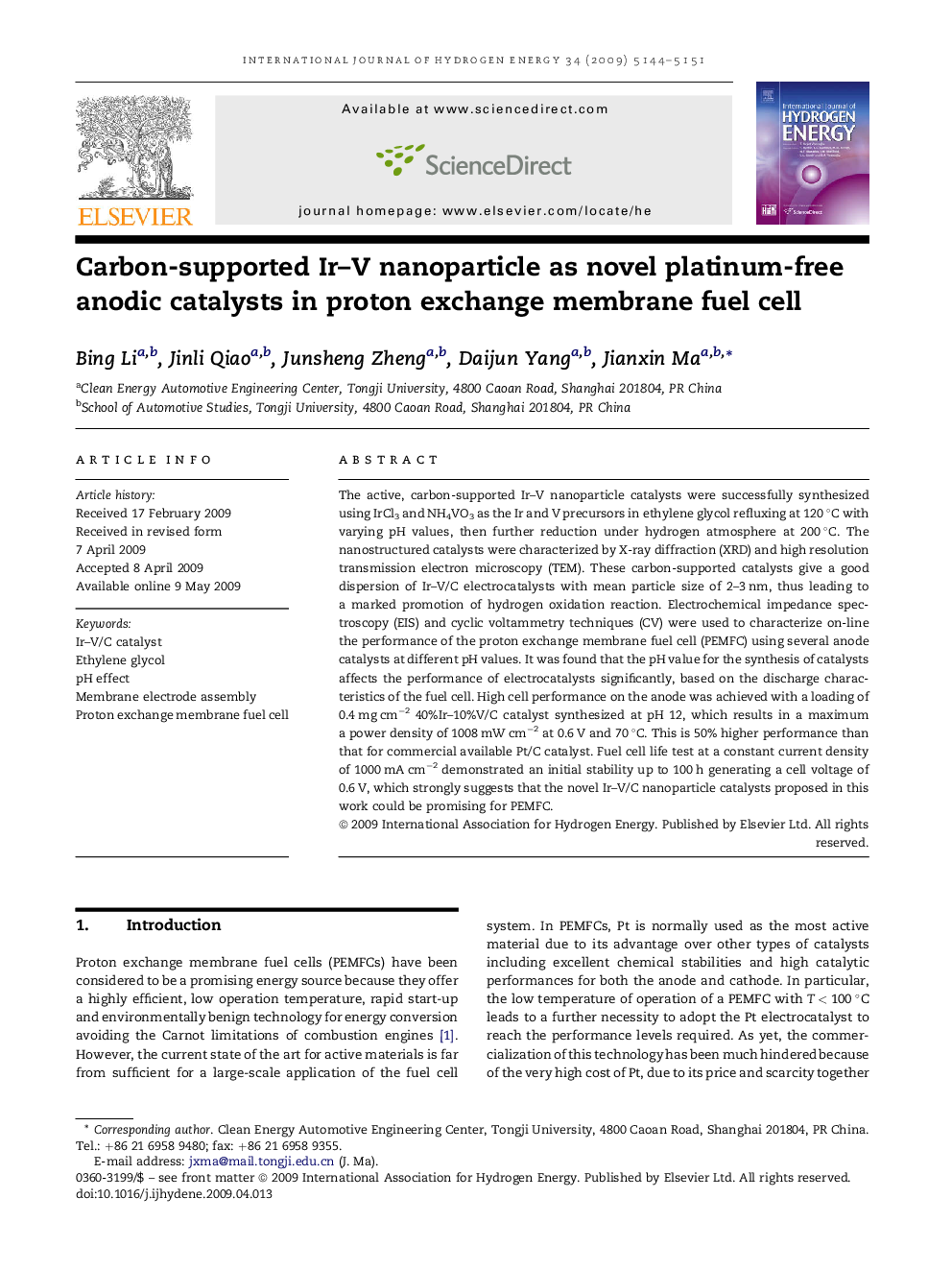| Article ID | Journal | Published Year | Pages | File Type |
|---|---|---|---|---|
| 1278825 | International Journal of Hydrogen Energy | 2009 | 8 Pages |
The active, carbon-supported Ir–V nanoparticle catalysts were successfully synthesized using IrCl3 and NH4VO3 as the Ir and V precursors in ethylene glycol refluxing at 120 °C with varying pH values, then further reduction under hydrogen atmosphere at 200 °C. The nanostructured catalysts were characterized by X-ray diffraction (XRD) and high resolution transmission electron microscopy (TEM). These carbon-supported catalysts give a good dispersion of Ir–V/C electrocatalysts with mean particle size of 2–3 nm, thus leading to a marked promotion of hydrogen oxidation reaction. Electrochemical impedance spectroscopy (EIS) and cyclic voltammetry techniques (CV) were used to characterize on-line the performance of the proton exchange membrane fuel cell (PEMFC) using several anode catalysts at different pH values. It was found that the pH value for the synthesis of catalysts affects the performance of electrocatalysts significantly, based on the discharge characteristics of the fuel cell. High cell performance on the anode was achieved with a loading of 0.4 mg cm−2 40%Ir–10%V/C catalyst synthesized at pH 12, which results in a maximum a power density of 1008 mW cm−2 at 0.6 V and 70 °C. This is 50% higher performance than that for commercial available Pt/C catalyst. Fuel cell life test at a constant current density of 1000 mA cm−2 demonstrated an initial stability up to 100 h generating a cell voltage of 0.6 V, which strongly suggests that the novel Ir–V/C nanoparticle catalysts proposed in this work could be promising for PEMFC.
